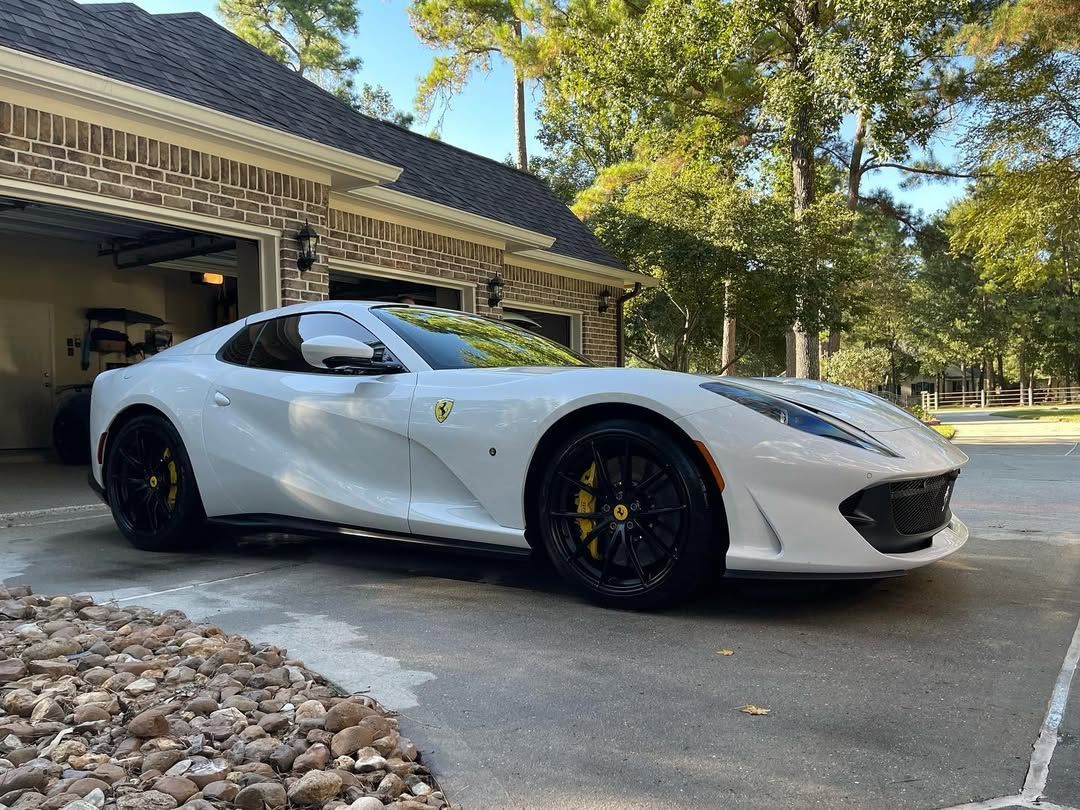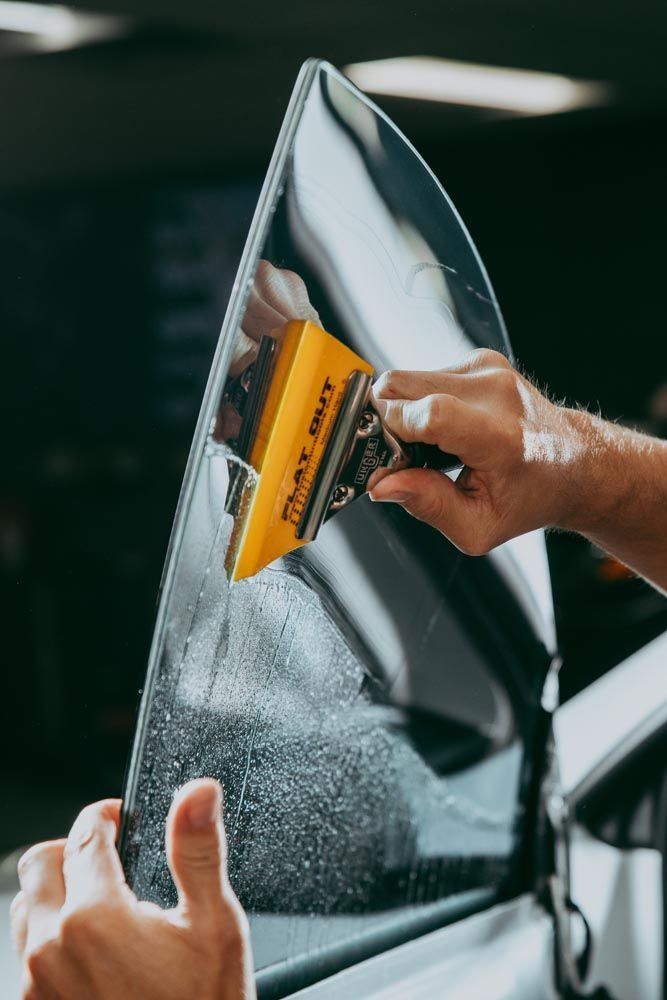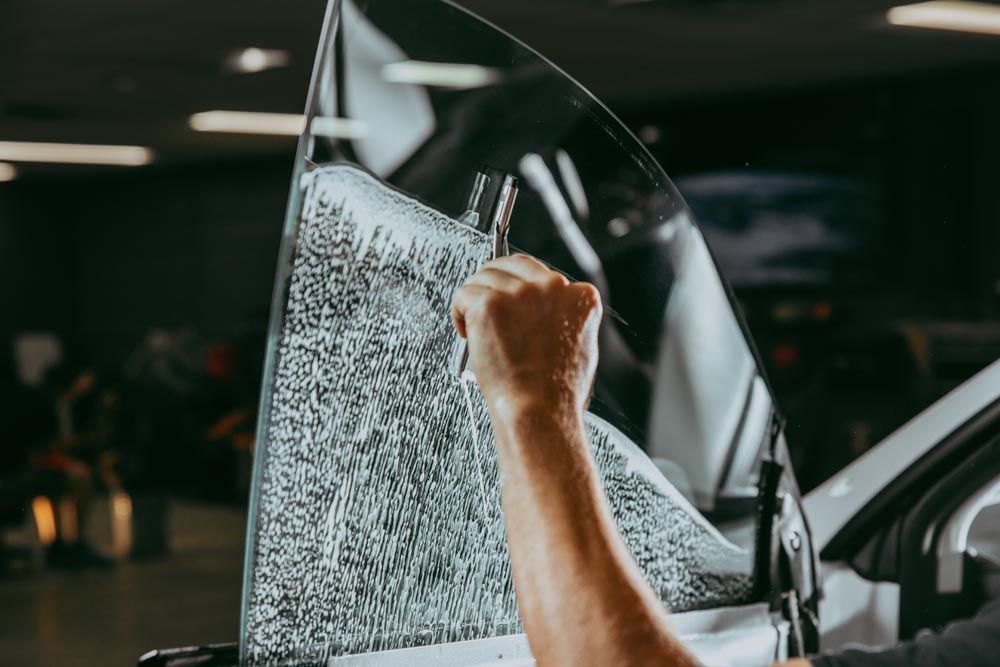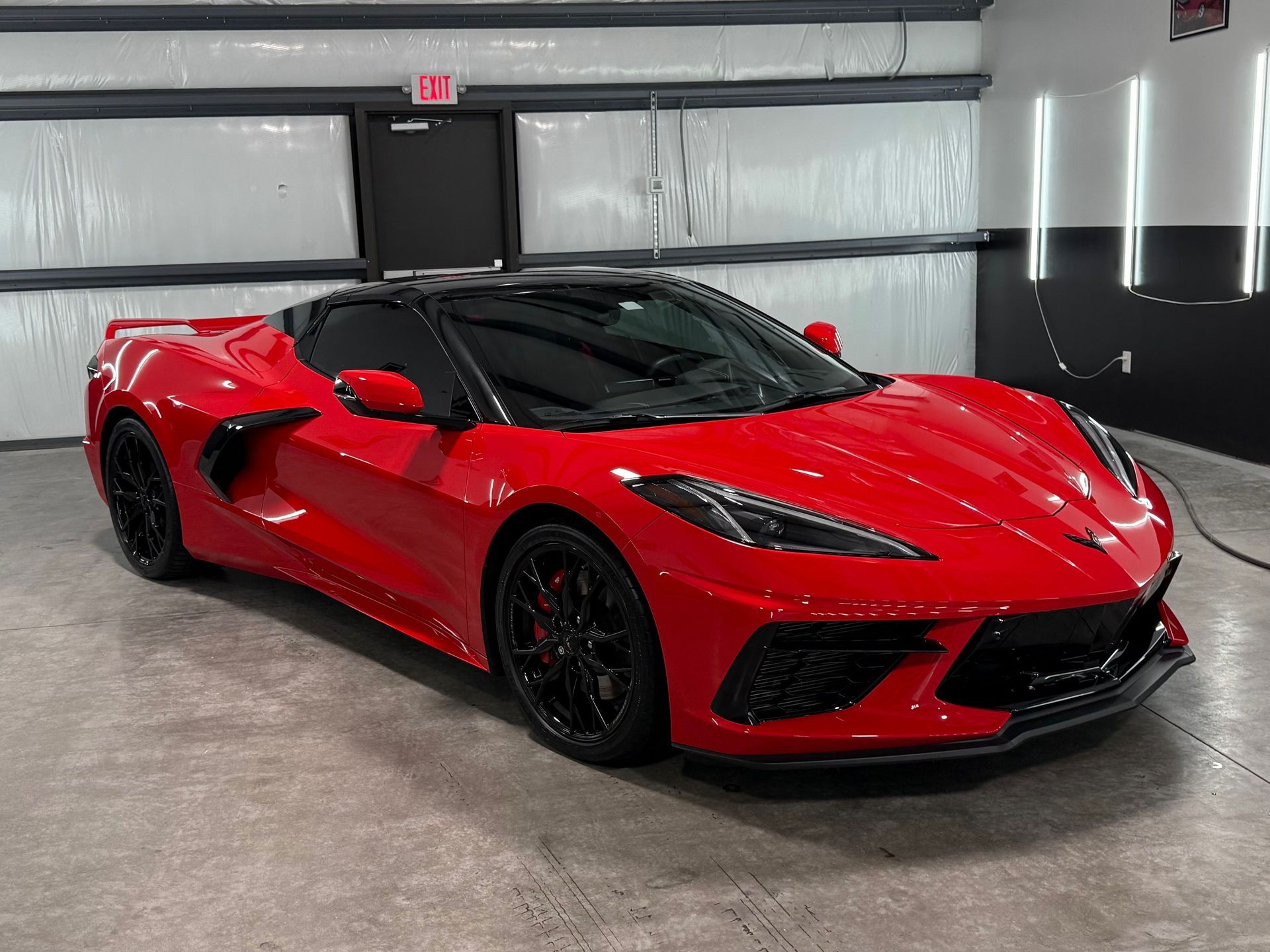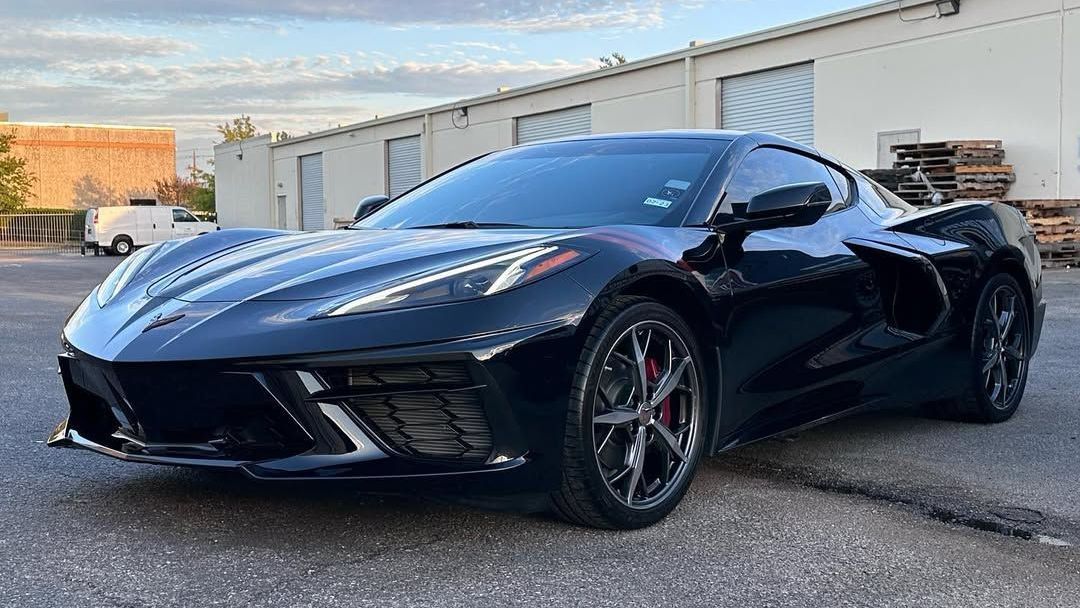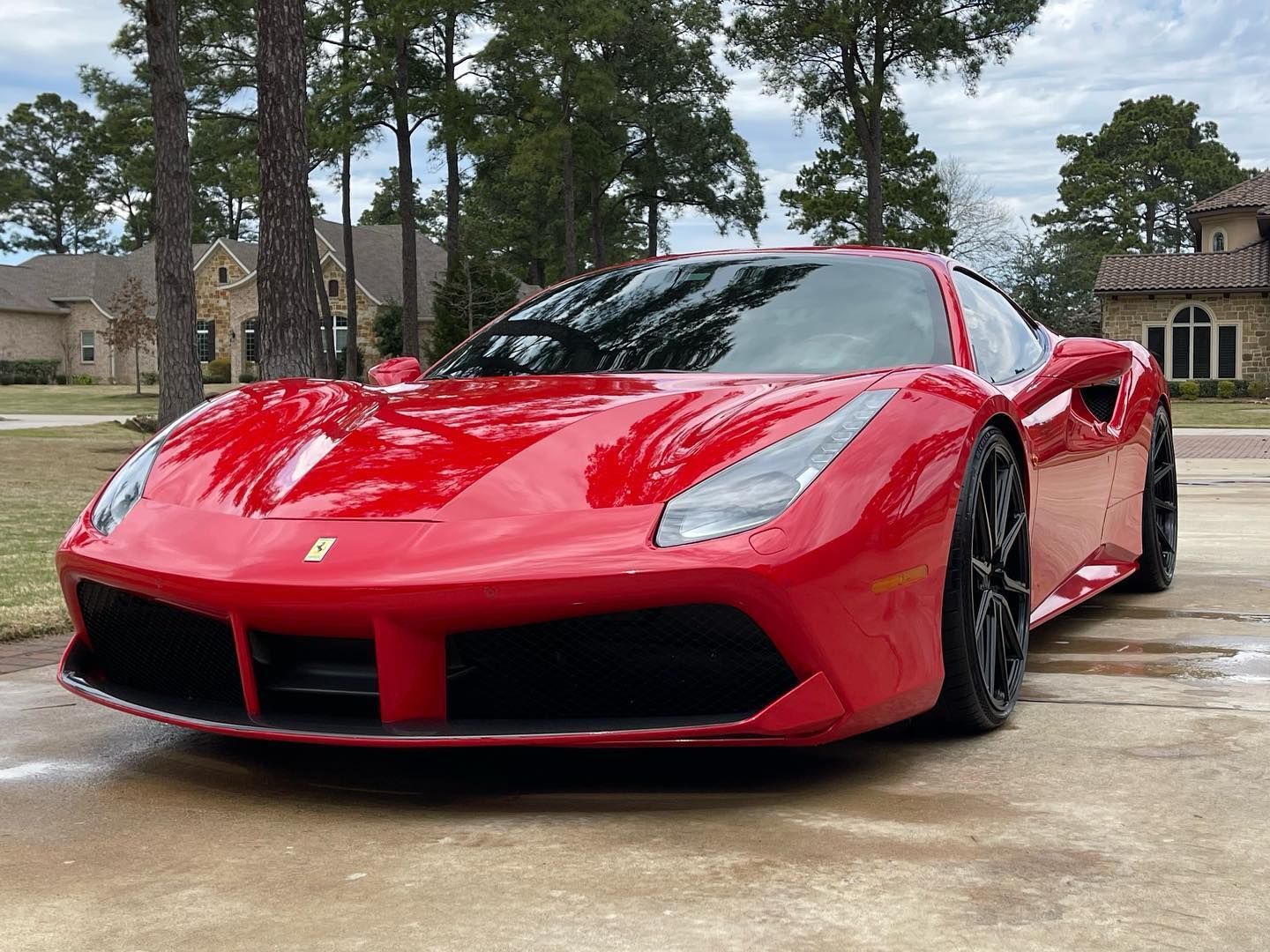What to Expect From Professional Auto Window Tinting: Benefits and Quality
GET A QUOTE NOWCALL (281) 705-3482
When it comes to enhancing your car, auto window tinting often tops the list of upgrades. Not only can a good tint make your vehicle look sleek and stylish, but it also offers several practical benefits that might surprise you. Think about driving on a sunny day: glare from headlights and sunlight can be blinding, but professional tinting actively reduces this annoyance, providing a clearer view of the road. Additionally, the right tint can improve privacy and protect your car's interior from harmful UV rays that can cause damage over time. With so much at stake, it's essential to know what to expect when you decide to invest in professional auto window tinting—because this choice isn’t just about aesthetics; it's about comfort, safety, and preserving your investment.
When opting for professional auto window tinting, you can expect improved visibility by significantly reducing glare from sunlight and headlights, enhanced privacy by limiting outside visibility into your vehicle, and protection for your car's interior from fading due to UV exposure. Additionally, a professional installation ensures a seamless fit that can last for years, usually accompanied by a warranty against common issues like bubbling or peeling.
Why Choose Professional Auto Window Tinting?
The primary allure of professional auto window tinting lies in the meticulous craftsmanship that trained technicians provide. Unlike a DIY approach, which can often result in unsightly mistakes, professionals use specialized tools designed to apply window films flawlessly. This experience means fewer bubbles and peeling edges, resulting in a seamless appearance. For instance, companies like Chow’s Detailing employ trained experts who understand the unique contours of various vehicle windows. They ensure the film fits snugly and uniformly, addressing challenging curves and intricate shapes where amateurs might struggle.
But it's important to recognize that professional installation goes beyond mere aesthetics; it can play a significant role in preserving your vehicle's value. High-quality window films installed by professionals can significantly improve your car's market appeal and resale potential. Tints are known to protect interior surfaces from fading due to sun exposure, which helps maintain the original look and feel of your vehicle over time. As such, buyers often prefer vehicles with professionally applied tints because they convey care and attention to detail. Moreover, quality tinting can block harmful UV rays, thus safeguarding not just the interior but also the health of passengers by reducing sun damage risks. The durability of these high-grade films usually spans five to ten years under normal conditions, giving considerable longevity compared to many DIY options that may peel or fade much sooner.
Key Benefits of Tinting
The benefits of auto window tinting are not just about enhancing your vehicle's appearance; they significantly impact comfort, safety, and longevity. First and foremost, UV protection stands out as a remarkable advantage. With tints blocking harmful ultraviolet rays, you're shielding yourself from potential skin damage and preserving your car's interior from fading and cracking. Have you ever noticed how sun-bleached upholstery can ruin the look of your vehicle? That’s the power of UV rays at work.
Heat reduction is another key benefit that many drivers appreciate, especially during scorching summer days. Just think about it: tinting can lower the inside temperature of your car! Imagine stepping into a car that's been parked in the sun for hours yet still feels comfortable. This drastic temperature drop is particularly appealing in hot places, where sunny days are the norm. With less heat comes reduced reliance on your car’s air conditioning, saving you money over time while also being kinder to the environment. Additionally, glare reduction plays an essential role in keeping drivers safe. Tinted windows can dramatically lessen glare from both sunlight and headlights at night, allowing for clearer visibility when it's most needed—a vital aspect, especially when driving in heavy traffic or during evening commutes.
Enhanced privacy is another undeniable perk of automotive window tinting. When you opt for darker tints, you effectively obscure the view inside your vehicle, providing comfort from prying eyes along with an added layer of security against theft and vandalism. The more difficult it is for someone to see what’s inside, the less likely they are to attempt a break-in. Picture yourself parked at a busy mall without constantly worrying about passersby staring into your back seat—tinted windows grant peace of mind. People often overlook the importance of protecting against shattering. In the unfortunate event of an accident, tinted films can hold shattered glass together instead of letting it scatter everywhere. This offers an added safety measure for passengers and helps maintain some level of privacy and security until first responders arrive.
Professionally installed window tints can decrease interior temperatures by as much as 45 degrees Fahrenheit—a staggering figure that truly speaks to their effectiveness. These compelling advantages highlight why investing in quality window tinting is not merely an aesthetic choice but a practical option that enhances your driving experience and vehicle durability.
The Installation Process Explained
The journey of window tinting begins with preparation, a crucial step that sets the stage for everything that follows. Technicians start by thoroughly cleaning the window surfaces using a high-quality glass cleaner and a lint-free cloth. This meticulous cleaning is essential, as any dirt, dust, or grease trapped beneath the film can create unsightly imperfections and compromise the effectiveness of the tint. A clean canvas allows the film to adhere properly and ensures maximum visibility—after all, who wants a beautiful tint marred by particles underneath? Once the windows are spotless and ready, it's time for the next step: cutting the film to size. Cutting the film is an art in itself. Technicians utilize either computer-generated templates or manual hand-cutting techniques to achieve precise dimensions tailored for each window. This precision cutting process is vital; it avoids leaving gaps around the edges, which could allow light to enter and nullify some benefits of tinting. Each piece must fit snugly to create a seamless appearance and maintain efficiency in blocking harmful UV rays and heat.
After preparing and sizing the film, it’s on to the application phase. In this step, technicians spray a soapy solution onto both the window surface and the adhesive side of the film, providing lubrication that eases positioning. This makes it much simpler to align the film perfectly without risking tears or creases. It’s almost like conducting a dance—each movement has to be deliberate while ensuring that no air bubbles form during placement. Once aligned, it's time for heat shrinking. Heat shrinking molds the film tightly against the curves of your vehicle’s windows. This technique utilizes heat to activate the adhesive and helps in fitting the film perfectly into its designated shape. Using specialized tools like a heat gun, technicians apply warmth along the edges and curves of the tinted film. The effect allows it to conform effortlessly to the contours of each window while pushing out any entrapped air bubbles in the process. It's mesmerizing to watch as what starts as a flat sheet transforms into a perfectly fitted layer of protection.
Finally comes a critical phase: the quality check and final touches. Experienced technicians carefully inspect their work, checking for defects like bubbles, creases, or misalignments. They ensure every inch of tint meets professional standards before declaring it complete. Often, they will take a few moments to discuss maintenance with you—the importance of allowing your new tint to cure undisturbed for 24-48 hours before rolling down windows is emphasized to ensure proper adhesion.
Types of Window Tint Films
- Ceramic Window Tint: Ceramic tints are known for their advanced heat rejection and high UV protection capabilities, blocking up to 99% of harmful ultraviolet rays. Unlike traditional options, they are constructed using non-metallic, non-conductive ceramic particles, making them an excellent choice for anyone who spends extended time behind the wheel. These films keep cabin temperatures lower, reduce glare, and protect the vehicle’s interior from sun damage—enhancing overall driving comfort. However, the cost of ceramic tint tends to be higher, and due to its lighter appearance, it may not provide the same level of privacy as darker films. Still, for those prioritizing skin protection and long-term interior preservation, the benefits often outweigh the expense.
- Carbon Window Tint: Carbon tints feature microscopic carbon particles that block a significant portion of infrared light, reducing heat buildup inside the vehicle by up to 40%. This makes for a cooler interior without relying heavily on the air conditioning system. Additionally, carbon films are fade-resistant and maintain their rich, dark appearance over time, offering both performance and aesthetics. Although pricier than dyed films, they are a worthwhile upgrade for drivers seeking a balance between cost, heat reduction, and visual appeal. Their non-reflective finish also avoids the signal interference issues that can affect metallic tints.
- Metallic Window Tint: Reflective metal layers compose metallic tints, giving them a shiny appearance and excellent shatter resistance. These films strengthen the glass, making windows more resilient during accidents or attempted break-ins—adding a layer of security to your vehicle. The reflective properties also help in deflecting heat and light, keeping the interior cooler. On the downside, metallic tints can interfere with electronic signals such as GPS, cellular reception, and radio frequencies. This makes them less ideal for drivers who rely heavily on navigation systems or mobile connectivity.
- Dyed Window Tint: Dyed tints are the most economical option, often chosen for their affordability and ability to enhance vehicle aesthetics and privacy. These films use a dyed layer that absorbs solar heat, offering a modest level of temperature control. While initially effective, dyed tints are prone to fading and discoloration over time—especially in sun-intense environments—leading to a diminished appearance and reduced performance. They are best suited for first-time tint users or those seeking a temporary, budget-friendly solution with the understanding that replacement may be needed sooner than with other tint types.
With these considerations in mind about various tint types, it's essential to weigh how cost aligns with quality when deciding on your ideal window film solution.
Cost vs. Quality Considerations
The decision on which window tint film to choose often hinges on understanding low-cost versus high-quality options and their long-term impacts. For instance, basic dyed tints are entry-level options that can be attractive due to their lower price point, starting at around $100. However, while these films may seem budget-friendly initially, they often come with a suite of drawbacks. These low-cost options lack the durability of higher-end films and can fade significantly over time, leading to an unsightly appearance that detracts from your vehicle's aesthetics. On the flip side, investing in high-quality window tints such as ceramic or carbon films can be significantly more expensive—often ranging from $400 to $600—but they deliver multi-faceted benefits that make the additional cost worthwhile. Not only do these premium tints provide superior heat rejection, ensuring a comfortable interior even in scorching climates like Houston, but they also offer robust UV protection, potentially blocking up to 99% of harmful rays. This safeguards occupants and protects the vehicle’s interior from fading and degradation caused by prolonged sun exposure.
You might consider it a good guideline then: Consumer Reports indicates that spending an additional 20% on tinting typically results in a product that lasts twice as long. This statistic underscores the reality that your investment today has the potential to save you money down the road—less frequent replacements mean less hassle. It's important to assess your personal preferences and requirements carefully. Balancing luxurious aesthetics against potential risks can pave the way for informed choices.
Factors to Consider Before Tinting
One of the most crucial aspects to consider when contemplating window tinting is legal regulations. Laws surrounding window tinting vary significantly from state to state, and understanding these regulations is key. For instance, certain states have specific limits on how dark your tint can be, especially for the front windshield and driver-side windows. Ignoring these restrictions could result in fines or even more severe penalties, such as having to remove the tint altogether. To avoid this hassle, it's prudent to consult local regulations before making any decisions. Moving beyond legalities, think about how you use your vehicle daily. Your vehicle usage plays a significant role in determining the type of tint that best suits your needs. If you find yourself driving during peak sunlight hours—a common scenario for many commuters—opting for tints with higher UV protection can vastly enhance your experience. These types of tints not only reduce glare but also protect you and your passengers from harmful UV rays that can lead to skin damage over time. Investing in a high-quality tint designed for sun exposure offers real benefits: cooler cabin temperatures during hot months and reduced strain on your air conditioning system.
Furthermore, let’s take a moment to consider long-term plans regarding your vehicle. Tints that withstand the test of time ultimately justify their higher initial expense. With safety being paramount, it’s vital to incorporate not only personal preference but also potential risks associated with non-compliance and poor choices. Therefore, choosing the right tint involves not just an aesthetic decision but a careful balance of legal compliance, vehicle usage, and long-term objectives. Understanding how each factor interplays can simplify the process and help you arrive at an informed decision that enhances both comfort and safety while driving.
In considering these elements, you'll be equipped to make choices that not only enhance your vehicle's appearance but also ensure compliance with local laws and provide lasting value.
Unmatched Auto Window Tinting Services in Houston, TX
Chow’s Detailing brings precision and protection together with
expert auto window tinting services tailored for Houston’s harsh climate. Their high-performance films help reduce interior heat, block harmful UV rays, and enhance your driving comfort—while adding a sleek finish to your vehicle. Whether you prioritize glare reduction, privacy, or long-term durability, Chow’s Detailing offers customized solutions using top-grade materials and flawless installation techniques.
Schedule your tint appointment today and experience cooler rides with professional-grade results!

